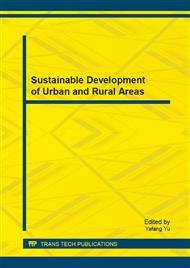p.434
p.438
p.443
p.449
p.455
p.463
p.469
p.475
p.480
Finite Element Analysis for the Crack Self-Repairing Behavior of the Concrete Beam Embedded Shape Memory Alloy
Abstract:
To study the crack repair performance of shape memory alloy to the concrete beam, the SMA wire with a certain initial strain at room temperature is placed eccentrically in the concrete beam. Because of its constrained recovery stress produced during the phase transition, the driving force is exerted on the beam by energizing the SMA. In this paper, the constrained recovery stress of SMA was calculated based on the Brinson constitutive model and would be equivalent to the unit stress of reinforcement. The repair performance of SMA was analyzed by ANSYS. According to the study, it can be concluded that the cracks in concrete beam can be effectively controlled by SMA. Increasing the diameter of SMA is a effective measure to enhance its driving force. When the excitation temperature is, the diameter of SMA are 2mm and 4mm, the response rates of crack width are 4.1% and 16.5%. Under certain conditions, the smaller the reinforcement ratio is, the better repair performance.
Info:
Periodical:
Pages:
455-459
Citation:
Online since:
January 2014
Authors:
Price:
Сopyright:
© 2014 Trans Tech Publications Ltd. All Rights Reserved
Share:
Citation:


